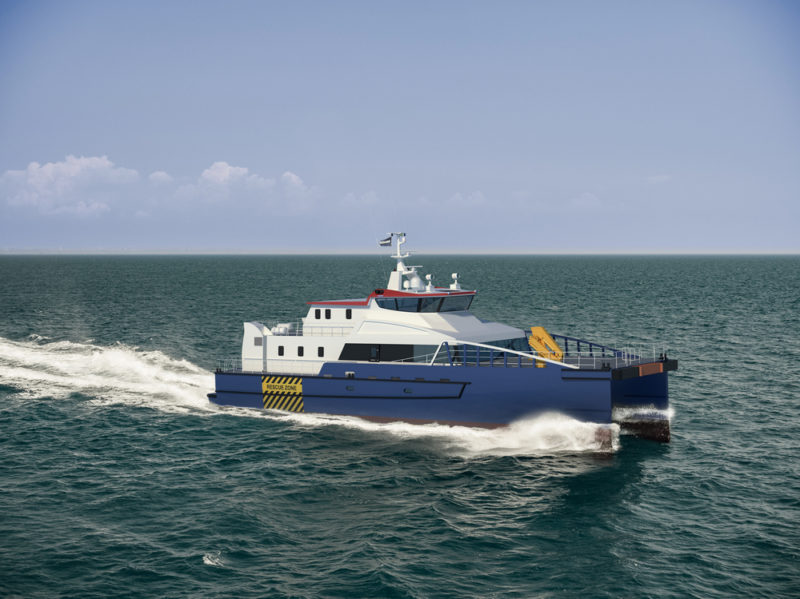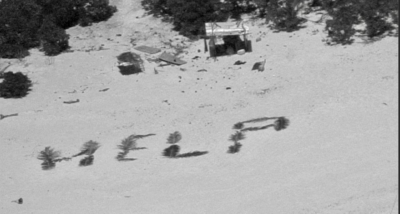Damen Shipyards Group has unveiled a new design for a bigger, longer-endurance offshore wind power service vessel, stepping up its proven European designs for challenging conditions of the emerging U.S. industry.
The fast crew supplier (FCS) 3410, a 112’ service accommodation and transfer vessel (SATV), would be built in U.S. shipyards with licensing and technical support from Damen, as the Netherlands-based group has done with tugboats, patrol vessels and other vessels built by U.S. partners. The FCS 3410 concept was featured at Damen’s display at the International WorkBoat Show in New Orleans last week.
“This vessel is well suited to numerous markets, however, we have given it long endurance capability so that it can remain at sea for up to five days at a time — a requirement typically seen in U.S. operations,” said Daan Dijxhoorn, Damen’s U.S. sales manager, in announcing the new design. “To facilitate this we have designed a vessel six meters (19.6’) longer than previous FCS types, able to host more on-board personnel and accommodation.”

A model of a Damen wind energy transfer vessel and turbine base was on display at the International WorkBoat Show. Kirk Moore photo.
The design is premised on Damen’s patented Twin Axe bow design, built to cut through waves and avoid slamming to improve seakeeping ability and onboard comfort. Damen’s FCS 2610 optimized seakeeping with the Twin Axe bow on a catamaran hull form, and more than 45 of those vessels were built for the European wind industry. Damen refined that design into the FCS 2710, one meter (39”) longer to extend its operational sea conditions window.
The new FCS 3410 also draws on the Damen accommodation support vessel 9020, a “walk-to-work” crew transfer vessel with a motion-compensating gangway for safer and easier crew transfer to offshore turbines. The ASV 920 is designed for transporting and providing accommodation for offshore personnel for up to a month.
Damen’s design aims to position it with shipbuilders who would supply wind energy developers who have federal leases from Massachusetts to Maryland.
“There’s a real sense that offshore wind is building momentum,” said Dijxhoorn. “The Block Island Wind Farm off Rhode Island is still the only wind farm in operation off the coast of the U.S., nearly two years after it opened, but a number of states are pushing ahead with their own plans for offshore renewable energy development.”





